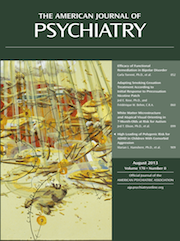The Placebo Effect in Clinical Practice
The etymology of the word placebo is definitely misleading. It means “any kind of medicine that is used more to please than to benefit the patient,” according to scientific researches, even though it can be truly beneficial. So what is the placebo effect?
The placebo effect is a fundamental and not an optional part of the healing process. It is not just behavioral (such as dissembling sickness behavior by pretending to be healthy), but it is something deeply embedded and makes your brain work in a healthier way, not only in depression, but also in Parkinson’s disease, where it can improve the dopamine release in the basal ganglia, as demonstrated in neuroimaging studies, or it can increase endorphin when one is in pain. Therefore, the placebo effect is not subjectively bounded at all.
We need to understand the placebo effect much better. It is not just interference in clinical and medical research activities. This volume by Dr, Walter Brown, republished by Oxford University Press, greatly helps us to understand the placebo effect in a new way.
The turning point in the formulation of this new concept, as is recalled in the volume, came in 1955 when Henry Beecher replaced the “clinical judgment,” based on the clinical view (which was in most cases an illusory one shared between doctor and patient), with the double-blind randomized placebo-controlled study.
Since then, doctors who had been using the placebo effect deliberately for centuries, but with only a partial consciousness of their responsibility for the effect they had by lying to their patients, realized the extraordinary power of the placebo effect.
While the placebo had been respected in clinical practice for a long while, in controlled trials it became a great nuisance, and most efforts were engaged in avoiding it in randomized controlled trials.
This aim was so seriously pursued that in 2003 Drs. Maurizio Fava and David Schoenfeld, of Massachusetts General Hospital, patented a specific trial design called the sequential parallel comparison design, which is a clinical trial design paradigm for increasing signal detection by cancelling the placebo effect by utilizing at least two phases of treatment and using the results twice from subjects who are “placebo nonresponders” and therefore nominated as the most reliable people.
So if the placebo effect is a problem in gathering more “scientific” proof of the efficacy of treatments, we have just begun to make it usable in clinical activity. So what is the placebo effect? Placebo is part of the healing process and is pre-eminently related to the “symbolic” meaning of a medical act and ritual.
It is a composite phenomenon, partially related to the nature of the disease, including its severity to the stress grade, and therefore is particularly evident in clinical psychiatry, where it ranges from 35% to 50%, mainly in anxiety, pain, and depression and to a lesser extent in obsessive-compulsive disorder, attention deficit hyperactivity disorder, and schizophrenia.
Expectation, shaped by personal beliefs, optimism, response, and conditioning expectation, can be enhanced through reflex conditioning. Another effect is classic Pavlovian conditioning, in which a patient is so accustomed to feeling better after a shot—when conditioned—no matter what is in it.
Factors that modulate the placebo effect can be concrete features, like dose, color, and cost of the pills, but also symbolic aspects, like hand writing a prescription rather than typing it, giving a name to a malaise, recognizing the other person’s pain, and making a diagnosis. The credibility of the health provider can also count. A substantial proportion of the placebo effect can be the “treatment situation”: the “situation” is not only a physical setting, even if just the appearance of an office is important, but it is also a slice of the external combined with the internal world of the two subjects in cause: the patient and the doctor in the space and time of their encounter.
Dr. Brown explains that the placebo effect is not a form of psychotherapy, even though it shares with it a sympathetic type of listening, positive care, and encouragement. It is not an in-depth interpretation or systematic desensitization or correction of cognitive distortion.
There is not a single placebo effect. Rather, there are many. One common effect involves the assumption that a particular pill is responsible for easing pain or discomforts that are actually subsiding naturally. Another placebo-effect type is represented by the relief that a baby feels, following upon a prodigious “mother kiss”; I thought that this dimension should be discussed further because it touches on the attachment relationship, which is involved in the doctor-patient relationship, as well as in the mother-child one. The attachment style and story of each subject play an important role in the personalization of the healing ceremony. Furthermore, it is this dimension that frames the perceived quality of the cure.
Solving the mystery of the placebo effect would potentially unlock whole new areas of therapy, but even before that, the recent purpose of the pilot program of the Presidential Health Commission for increasing payments to doctors who deliver high-quality care at lower cost, while reducing payments to those who deliver low-quality care at higher cost, represents an interesting opportunity to prove the cost effectiveness of the placebo effect.
At the same time, it would restore a core feature of the doctor-patient relationship, without which there is no medicine except medical technology applications dangerously leaning over the cliff of the nocebo effect (from Latin, a detrimental effect on health produced by psychological or psychosomatic factors such as negative expectations of treatment or prognosis.)



